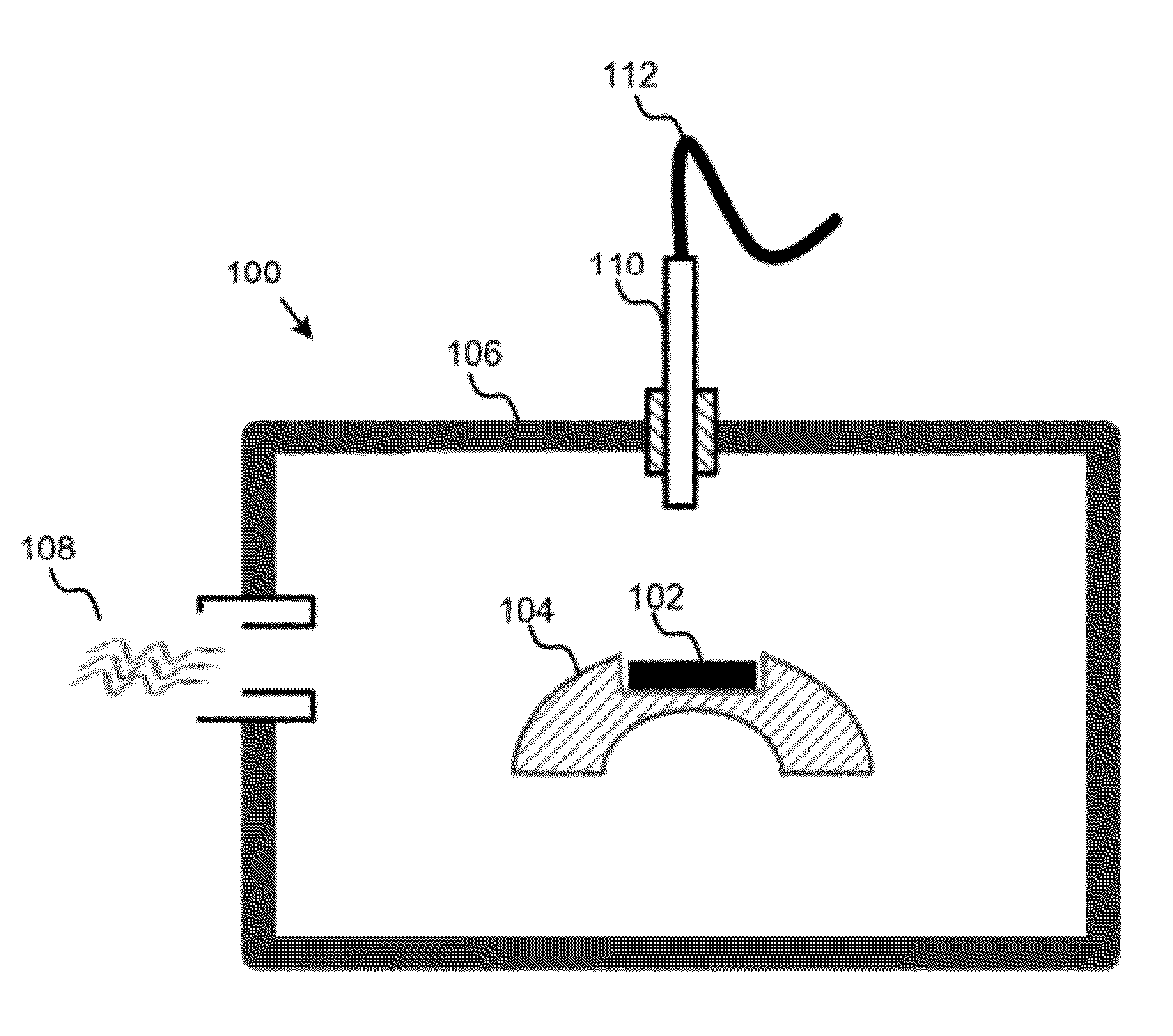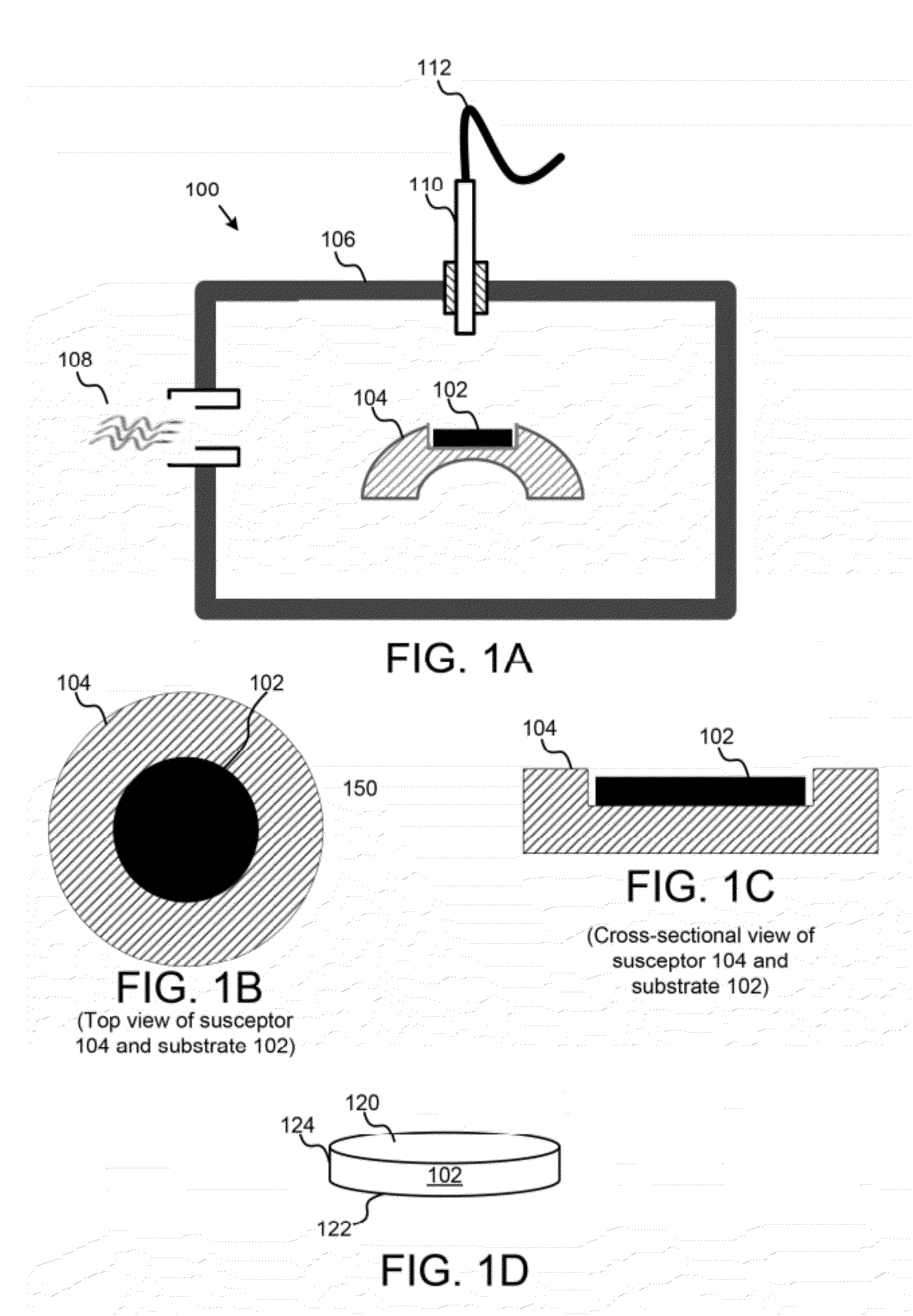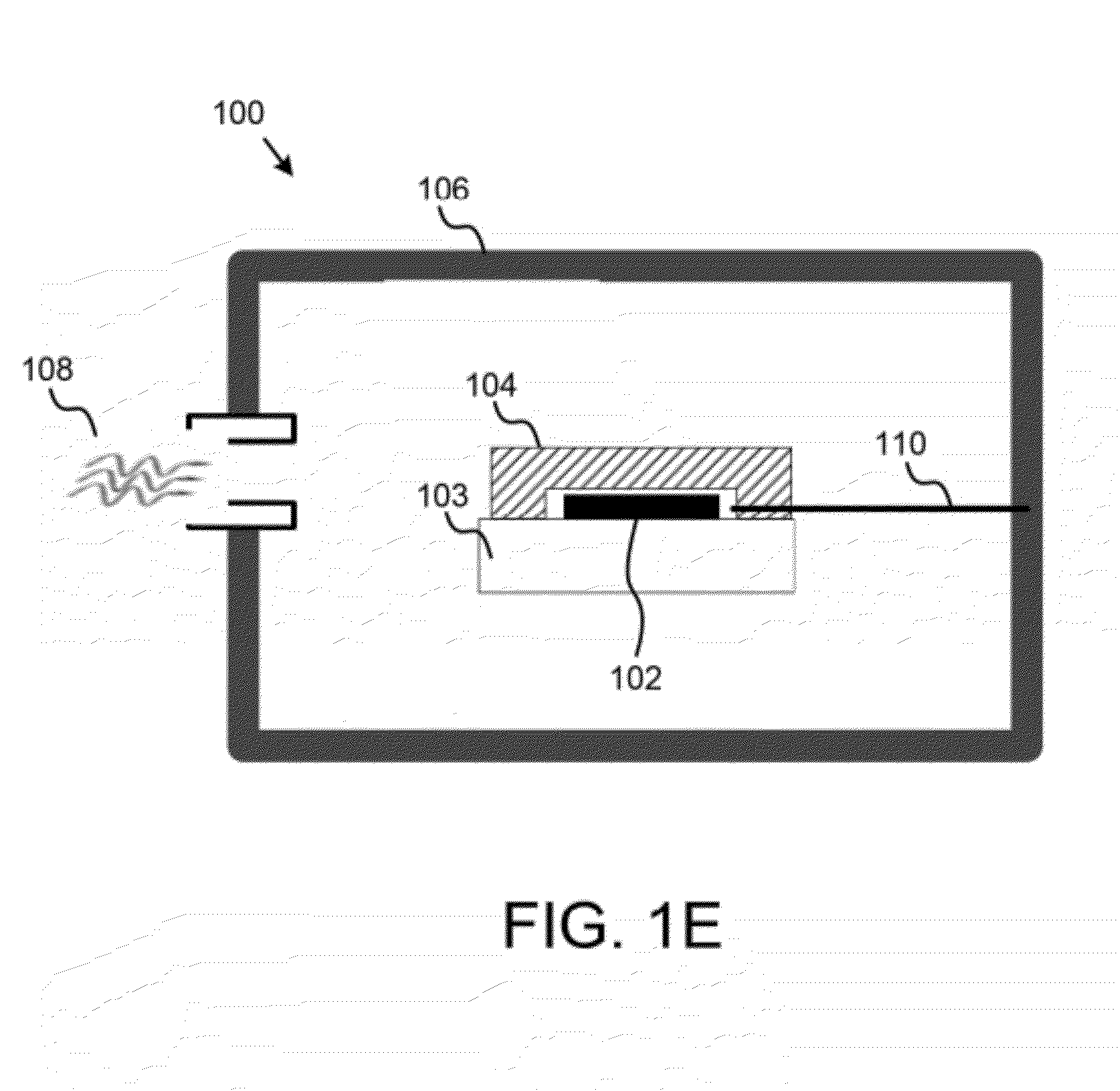Systems and Methods for Susceptor Assisted Microwave Annealing
- Summary
- Abstract
- Description
- Claims
- Application Information
AI Technical Summary
Benefits of technology
Problems solved by technology
Method used
Image
Examples
example 1
[0052]Microwave annealing of different dosage arsenic implanted Si samples was done in a single-frequency (2.45 GHz), 2.8×104 cm3 cavity applicator microwave system equipped with a 1300 Watt magnetron source, with annealing times of 40, 70, and 100 seconds for each sample type. A Raytek Compact MID series pyrometer with a spectral response of 8-14 μm was used to monitor the near surface temperature. The emissivity for the samples was adjusted by careful calibration of the temperature read by the pyrometer against the temperature monitored by a thermocouple. For the arsenic implanted samples, the surface temperatures ranged from 620-680° C. FIG. 2B shows a typical plot of temperature of two samples versus anneal time for 1×1015 As+ cm−2 samples which were microwave annealed for 100 s. The anneal time is defined as the duration between when the microwave is switched on and when the microwave is turned off.
[0053]For the first sample, the annealing of the samples was assisted by silicon...
example 2
[0065]Two different annealing methods, microwave annealing and vacuum thermal annealing, were used to anneal Ag—Cu thin films, which can serve as a possible and reliable interconnect system. The thin films of Ag—Cu used here were deposited by co-sputtering. A sputter target of pure Ag and pure Cu were used. The base pressure of the sputter system before each deposition was approximately 1×10−7 Torr. The deposition was performed using pure Ar gas (99.999%) at a pressure of 10 mTorr. The dc power for Ag deposition was fixed at 50 W; whereas, the dc power for Cu deposition was varied. The thickness and composition of the Ag—Cu alloy films were determined using Rutherford backscattering spectrometry (RBS) with a General Ionex Tandetron accelerator. Samples were analyzed in a vacuum of less than 10−6 Torr using a 2.0 MeV He ion beam and the sample tilt angle was 8 degrees. The RUMP computer-simulation program was used to determine composition and thicknesses.
[0066]For microwave annealing...
PUM
 Login to View More
Login to View More Abstract
Description
Claims
Application Information
 Login to View More
Login to View More - R&D
- Intellectual Property
- Life Sciences
- Materials
- Tech Scout
- Unparalleled Data Quality
- Higher Quality Content
- 60% Fewer Hallucinations
Browse by: Latest US Patents, China's latest patents, Technical Efficacy Thesaurus, Application Domain, Technology Topic, Popular Technical Reports.
© 2025 PatSnap. All rights reserved.Legal|Privacy policy|Modern Slavery Act Transparency Statement|Sitemap|About US| Contact US: help@patsnap.com



